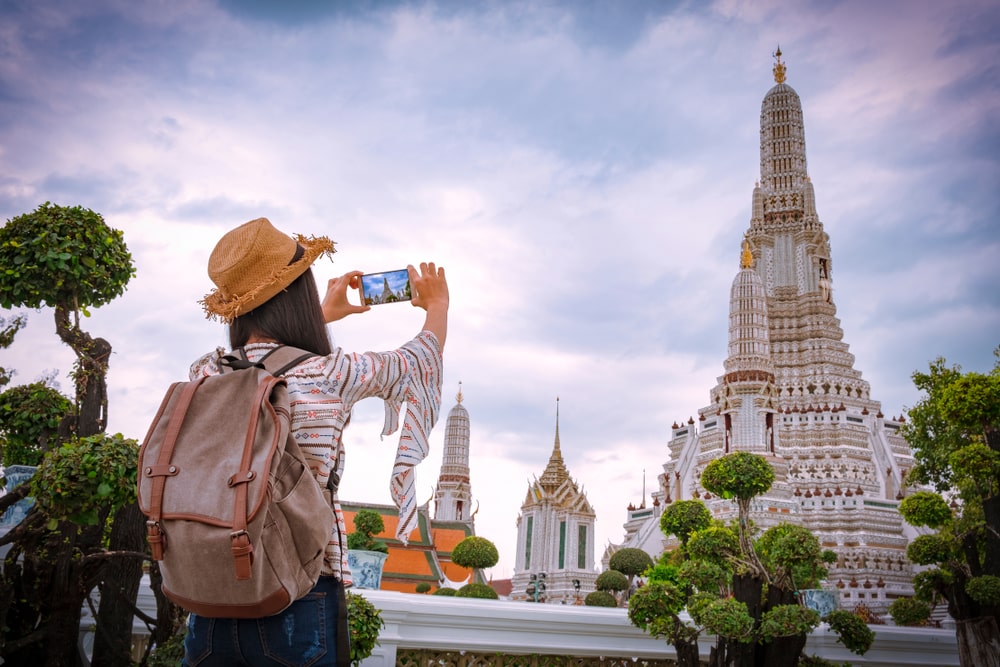Since the smartphone is ubiquitous, it has largely replaced the system or SLR camera for normal vacationers on vacation trips. Nevertheless, it is unfortunately rarely possible to capture the motifs on location with the desired liveliness and precision. We show five tips that help to make vacation photos shine in a new light.
Tip 1: the right software
Depending on the smartphone, the software for the camera’s settings is more or less extensive. If possible, the following settings should be made, among others:
- By default, most smartphones take pictures in JPG format. This reduces the file size, but JPGs are always subject to loss effects. Switching to RAW mode guarantees that images are captured without compression (which is also beneficial for post-processing).
- A higher resolution potentially ensures that details in the photo are more visible. This is useful for motifs with many small elements – such as a tree with countless flowers. Activating the highest resolution should be done if necessary.
- Most photo applications allow horizontal and/or vertical guides to be displayed. This helps, for example, to align a photo exactly with the horizon or to take a picture of a building without a side tilt.
Many other tips can improve the experience: A flash should be avoided unless absolutely necessary. In addition, the ISO value in the software should always be selected as low as possible. ISO values that are too high add a distinctive image noise, which looks bad, especially in the dark.
Tip 2: Image stabilizer
Older and modern smartphones show big differences in handling. When taking a photo, the preview on the display is very steady on some models, but very shaky on others. This is due to the integration of an optical or electronic image stabilizer in the smartphone. Optical models are classically superior, but the electronic variants have been able to catch up strongly in recent years.
The image stabilizer compensates for the movements caused by humans. These can be fast movements, for example when running, but also calm, small movements that may be generated by breathing. An image stabilizer is therefore extremely suitable if moving subjects are to be captured and you are also in motion.
For example, if you want to photograph a busy beach on vacation, a sporting event attended locally or similar events, you should prefer a smartphone with image stabilizer. It ensures that even in constant, flowing movement, calm images are created that capture the motifs well. This also has an extremely positive effect on recorded videos.
Tip 3: Tripod
This applies to people with high demands on the stability of their photos. Tripods with smartphone mounts anchor the small devices just as firmly as a DSLM or DSLR, for example. This makes absolutely calm photos possible and brings many advantages (Link: https://feiersun.de/5-gruende-warum-du-mit-einem-stativ-bessere-bilder-machen-kannst). Even with very steady hands, it can be difficult to take the photo absolutely free of motion blur. Many travel tripods are relatively light and they can be folded or folded. This means that taking it with you on holiday is no problem.
High-end smartphones equipped with an optical zoom benefit even more. With a high zoom factor, it is impossible for humans to keep the device still. Even the smallest movements are enough to make the preview jump back and forth on the display due to the high zoom. A tripod provides the necessary peace and quiet to capture even more distant subjects absolutely perfectly.
This advantage grows the further away the subjects are – such as shy animals that are to be captured from a great distance.
Tip 4: Image editing
Really outstanding holiday photos on the Internet are practically never unedited. At the same time, it is difficult to edit the pictures taken with a smartphone directly on this device. The following defects are to be expected:
- Small display, therefore difficult precision work
- Limited performance even on high-end models
- App offer relatively limited
- Full effect of the image difficult for humans to grasp
It is better to use at least one notebook or even better a desktop PC. Alternatively, connecting a notebook to a large monitor is sufficient. On 27 inches and more and with 4K resolution, images can be edited much better. If desired, each pixel can be changed individually – and even complex work that goes beyond cropping and horizon straightening takes significantly less computing time.
In addition, the image is much easier to capture in its entirety on a large display. Scrolling to take a closer look at details is no longer necessary. On Windows and macOS, photo enthusiasts also have a gigantic collection of high-quality applications for image editing. Special devices for ambitious photographers enhance the experience even more, but they are very expensive to buy.
Tip 5: Night photography
Due to the relatively small sensors in smartphones, they have problems capturing enough light in poor lighting conditions – i.e. at dusk, at night or in closed rooms. Some tips help:
- On the one hand, activating HDR mode can improve the contrast in the photos. On the other hand, HDR photos often have a slightly “supernatural” touch. Everyone has to decide for themselves whether this look is desired or not.
- The shutter speed should be increased. During the day, a short snapshot is sufficient. At night, the smartphone should be given a few seconds to capture enough light. So even dark streets are illuminated (almost) as bright as day. Here, too, a tripod is worth its weight in gold.
Some smartphones are also equipped with special night modes. These are always small software tricks that sometimes work well and sometimes not. Our tip: just try it out!


